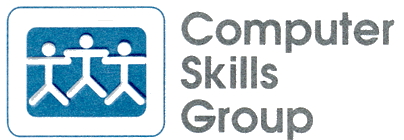

We are all familiar with the standard pointing device for personal computers, the device known as the mouse. Until recently, the two-button mouse design has been fiddled with from time to time, but has remained essentially unchanged since its introduction. That all changed a couple of years ago when a wheel was added between the two standard buttons.
The new design, called a "wheel mouse" or "scroll mouse" seems to be the one improvement that will achieve the status of being a new standard. Most new computers being delivered today have a wheel-mouse. It is used most often to scroll up and down on web pages or file lists, and it is definitely habit forming. Once you learn to use the wheel, trying to use the old two-button mouse is very distracting.
If you already have a wheel-mouse, you already know how to use the basic functions. There are two things you may not be aware of however, and they are the subject of this week's tip.
Tip #1 -
One really nice feature which most wheel-mouse users don't realize is there is the ability to enlarge or shrink the images on your screen in certain programs. I can't tell you all the programs it will work with, but all you need to do is try it to find out if it works with the program you are in. For example, I use Outlook for my email. If I am reading this email in Outlook, and the font is too small to read comfortably, all I need to do is hold down the "control key" (the one labeled "Ctrl") and spin the wheel. Spin it one way and the text enlarges, spin it the other way, it shrinks. As I said, this can be very handy!
Tip #2 -
This tip is a caution. If you use the Internet to make purchases, answer questionnaires, do your banking on-line, or fill out any type of form at all, you will often see boxes where the company wants you to fill in the blank by choosing from a list of valid entries which they provide. A common example is when you are entering your mailing address. The state box often has an arrow which, when clicked, opens a list of all the state abbreviations. You point to "Colorado" and it enters "CO" for you.
Here's the caution -
When you scroll the wheel, and a screen doesn't move as expected, always check to see if you changed some entry on that screen.
Here's why -
In the above example, the normal human thing to do is to check that "CO" was entered in the state box and then shift your attention to the next box on the form. The problem is, the computer is still focused on the state box, even though you aren't. If, without thinking, you decide to roll the web page up a few lines, and you use the scroll wheel to do that, you can inadvertently change your last entry and not even notice it. You have already shifted your attention to the next box, but the wheel-mouse thinks you are still watching the state box. You are further distracted by the fact that spinning the wheel did not make the web page move, as you had hoped. You point at the down arrow on the right edge of the window, roll the form up, and return to filling out the form. Meanwhile, instead of your address saying "CO", it now reads "IA" or some other state down the alphabetical list.
It's an easy mistake to make (don't ask how I know). Most forms designers will ask you to verify your entries before you actually hit a "submit" button, but even then, you can miss it. Your package gets shipped to Iowa and you have no idea how that happened. Okay, the zip code will probably save you in this example, but there are many other examples where incorrect information will be submitted with nothing to alert the recipient that you didn't mean to say that.